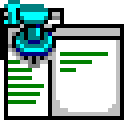
Dynalist
Dynalist is an outliner and productivity tool designed to help users organize ideas, tasks, and information in highly structured, hierarchical lists. It leverages the power of outlining to break down complex subjects into manageable parts, facilitating everything from simple task management to large-scale project planning and knowledge organization.
About Dynalist
Dynalist is a versatile outliner tool that empowers users to capture, organize, and structure their thoughts and tasks with unparalleled flexibility. At its core is an infinitely deep hierarchical list structure, allowing you to nest items within items to an unlimited degree. This tree structure is perfect for breaking down complex ideas, outlining books, planning projects, or simply managing daily tasks. Each item in your list can be a simple note, a task with a checkbox, or even a more complex entry with rich text formatting, images, and attachments. Markdown support provides familiar formatting options, while LaTeX integration is available for those who need to include complex mathematical expressions.
Key features that enhance its utility include:
- Powerful Navigation and Structure: Easily zoom into specific parts of your outline to focus on details, and use internal links to cross-reference different sections or documents within Dynalist.
- Flexible Task Management: Transform list items into actionable tasks with built-in checkboxes. Organize tasks hierarchically and manage dependencies implicitly through structure.
- Seamless Collaboration: Share documents with others and collaborate in real-time, making Dynalist suitable for team projects and shared knowledge bases.
- Robust Sync and Offline Access: Keep your data consistent across all devices with automatic cloud sync. Access and modify your outlines even without an internet connection, with changes syncing automatically once you're back online.
- Advanced Features for Power Users: Utilize tags and filters for efficient information retrieval, employ date and time features for scheduling, and customize your workflow with keyboard shortcuts and customizable settings.
- Integration Capabilities: Connect Dynalist with services like Google Calendar to visualize dated items, and integrate with cloud storage like Dropbox for backups and external file linking.
Dynalist differentiates itself through its singular focus on outlining combined with a rich feature set that supports everything from quick note-taking to intricate knowledge management systems. Its clean, intuitive interface minimizes distractions, allowing you to concentrate on organizing your thoughts effectively.
Pros & Cons
Pros
- Infinitely deep list hierarchy provides exceptional organizational flexibility.
- Clean and distraction-free user interface.
- Seamless cross-device synchronization and robust offline access.
- Effective task management integrated within the outline structure.
- Supports real-time collaboration on shared documents.
Cons
- lacks more advanced project management features like dependencies or Gantt charts.
- The free tier has limitations on item count and features.
- Less visually oriented compared to some other productivity tools.
What Makes Dynalist Stand Out
Pure Outlining Focus
Unlike many multipurpose apps, Dynalist is singularly focused on providing a supreme outlining experience.
Infinitely Deep Hierarchy
Offers unlimited nesting depth for list items, allowing for incredibly detailed and complex organizational structures.
Seamless Cross-Device Sync and Offline Access
Provides reliable cloud synchronization and the ability to work offline, ensuring access and consistency across all platforms.
Flexible and Fast Input
Allows for rapid capture of ideas and tasks with minimal friction and supports various formatting options.
Features & Capabilities
27 featuresExpert Review
Dynalist Review: A Powerful Outliner for Organized Thinking
Dynalist is a robust and highly flexible outliner tool designed for individuals and teams seeking a structured way to capture, organize, and manage information. At its core, Dynalist employs a nested list structure, allowing users to hierarchical break down ideas, tasks, and knowledge into manageable components. This fundamental design makes it particularly well-suited for a wide range of use cases, from simple grocery lists and daily task management to complex project planning, brainstorming sessions, and building detailed knowledge bases.
The primary strength of Dynalist lies in its infinitely deep hierarchy. Unlike applications with fixed levels of organization, Dynalist allows you to nest items within items to an unlimited degree. This is incredibly beneficial for users who need to delve into details without losing the context of the broader structure. You can start with a high-level topic and progressively break it down into smaller, more granular sub-points. The ability to collapse and expand sections of the outline (outline folding) is crucial for managing this complexity, allowing users to focus on specific areas while keeping the overall structure visible.
Task management in Dynalist is seamlessly integrated into the outlining framework. Any list item can be transformed into a task simply by adding a checkbox. This approach is less rigid than dedicated task managers, offering flexibility while still providing a visual indicator of completion. The hierarchical structure naturally lends itself to organizing tasks into projects, sub-projects, and individual steps. While it lacks advanced project management features like dependencies or Gantt charts found in more specialized tools, its simplicity and integration with the outline make it highly effective for task tracking within a structured context. Integration with Google Calendar allows users to visualize dated items from their Dynalist outlines, adding a simple scheduling layer.
Collaboration features in Dynalist are straightforward and functional. Users can share documents with others and collaborate in real-time. This is particularly useful for team brainstorming, shared meeting notes, or building collaborative knowledge bases. Permissions can be set to control access levels, ensuring data security and integrity during collaboration.
Information retrieval is facilitated by a strong search function and support for tags. Users can quickly find specific items within their documents or filter content based on applied tags. This becomes increasingly important as the amount of information stored in Dynalist grows. The ability to cross-link items and documents allows users to build a network of interconnected information, further enhancing navigation and context.
Dynalist provides a clean and minimalist interface across its web, desktop, and mobile applications. This design choice minimizes distractions and keeps the focus on the content. Users can customize aspects of the interface, including switching to a night mode/dark theme for more comfortable viewing in low light. The application supports Markdown for text formatting, offering a fast and efficient way to style content without leaving the keyboard. For users who require it, LaTeX support is also available, enabling the inclusion of complex mathematical and scientific notation.
Reliable synchronization is a critical component of any productivity tool, and Dynalist excels in this area. Automatic cloud sync ensures that your outlines are always up-to-date across all your devices. The application also offers robust offline access, allowing you to work on your documents even without an internet connection. Changes made offline are seamlessly synced once a connection is re-established.
Export options, including OPML, provide compatibility with other outlining and productivity software. This flexibility ensures that users are not locked into the Dynalist ecosystem and can move their data if needed.
In conclusion, Dynalist is an excellent choice for users who value a highly structured approach to information and task management. Its core strength lies in its powerful and flexible outlining capabilities, supported by features like seamless synchronization, collaboration, and various input/output options. While it might not have the breadth of features found in all-in-one productivity suites, its focused excel in outlining makes it a top contender in its category.











